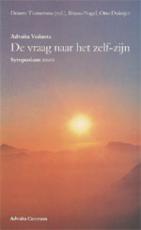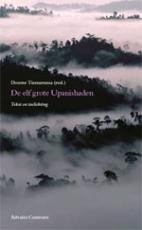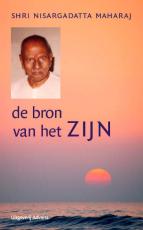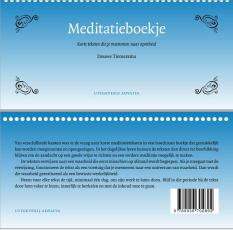Advaita Post, Volume 15 no. 8 - )n Identification (cont'd)
September 1. 2014
Text Satsang
From an advaita talk with Douwe Tiemersma in Gouda on May 22, 2002
On identification (continued)
So if you don’t realize what you ultimately already are, apparently you’re still holding on to something. But you’re not aware of doing that.
Yes. Realization is a direct knowing ‘This is it’. With it, the last attachments that limit you are broken through. As long as that is not the case, you can’t do much. We have already established that many times. The only thing is to look once again incredibly clearly at your own situation, looking very precisely: there, there are forms that have not yet been released. You confirm that.
The crazy thing is: when you recognize that you are not this form, then it’s clear.
When this in its limitation is actually recognized in a very vibrant way, then it doesn’t function restrictively for you any longer. You see it in its limitation and you can only do that when it arises in the greater sphere of yourself. So then you already recognize: I’m not stuck there, I’m not locked in.
So you can’t do anything, but just observe …
Yes, establish very clearly in consciousness what there is to establish. But that’s just the point, to achieve a clarity that is so great that absolutely everything will appear within it.
But that’s so difficult. You can’t really achieve it just by wanting to.
You can certainly focus yourself on it. You can give more attention to yourself, be aware that you are supported by your chair, but also: be aware that your feelings rely on something. You can start looking at what that something actually is.
So even if you say ‘I’m just sitting quietly’, then you’re thinking once again within a structure.
For example, ‘I’m sitting here and I can’t do anything.’ That’s great, but the chances are also great that you’ll just keep sitting there. Then you have a structure again, perhaps a bit more spacious than before, but it is a certain structure. This is often very vague, so that you don’t see through it.
So every idea that rises up in you, you just have to drop?
Understand: that is a limited idea. But also: with my feeling-sense I seem to be attached to this and that. Of course, in daily life you learn an incredible amount. In life there are so many things that disappear and then you notice: apparently I was stuck there. Now that these things are forcefully taken away from of me, I notice that this attachment was there. Now I am free from it.
People who are already free also say: you look over there, you are already that.
Do you see it? The recognition can be sudden: what you are not and That which you truly are. A certain resonance takes place with most of those who sit here. But this process can go further. When you experience even for just a moment a bit of this possibility, that process can continue so that every structure explodes.
That’s just a huge relief, but the next moment it slams shut again.
Yes, until you are so relieved that there’s no returning any more. As long as this narrowing reaction is there take a look at it. At a certain moment you see this from a distance and say: ah, that belongs to the physical-mental mechanism; what do I have to do with that? The leap was there. There is no ‘I’ any more that would like to have a toehold somewhere. When you as Self are everything, this structure of ‘I’ and ‘toehold’ just isn’t relevant any longer. It’s no longer there.
****************
Er is geen tweeheid
als je ontspannen bent
in zelf-bewustzijn
is dat duidelijk.
Boeken
Douwe schreef en redigeerde gedurende zijn leven boeken. Via onze uitgeverij zijn deze nog verkrijgbaar.



